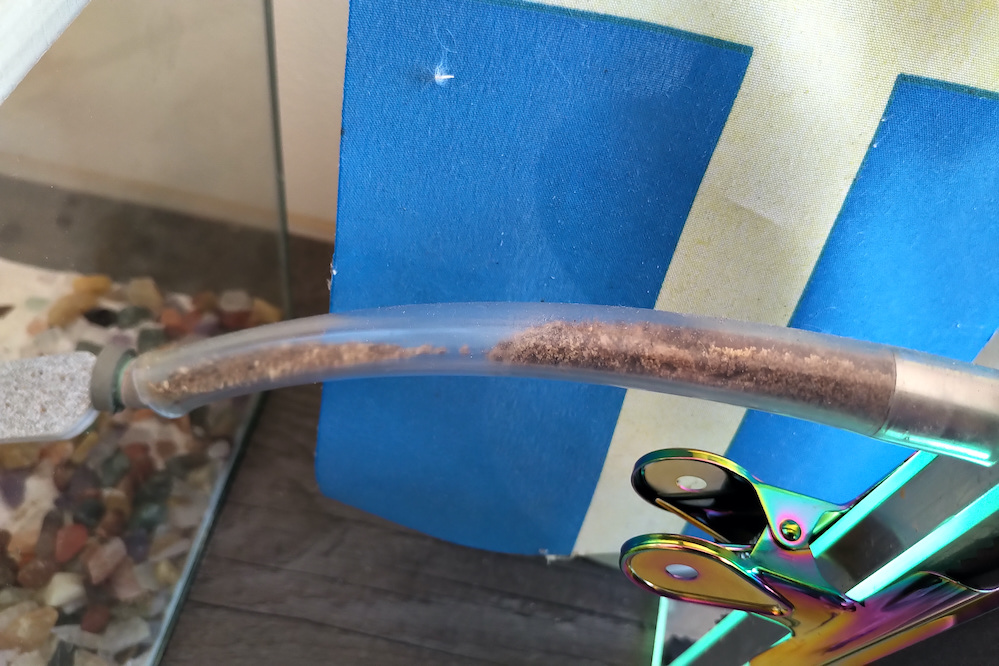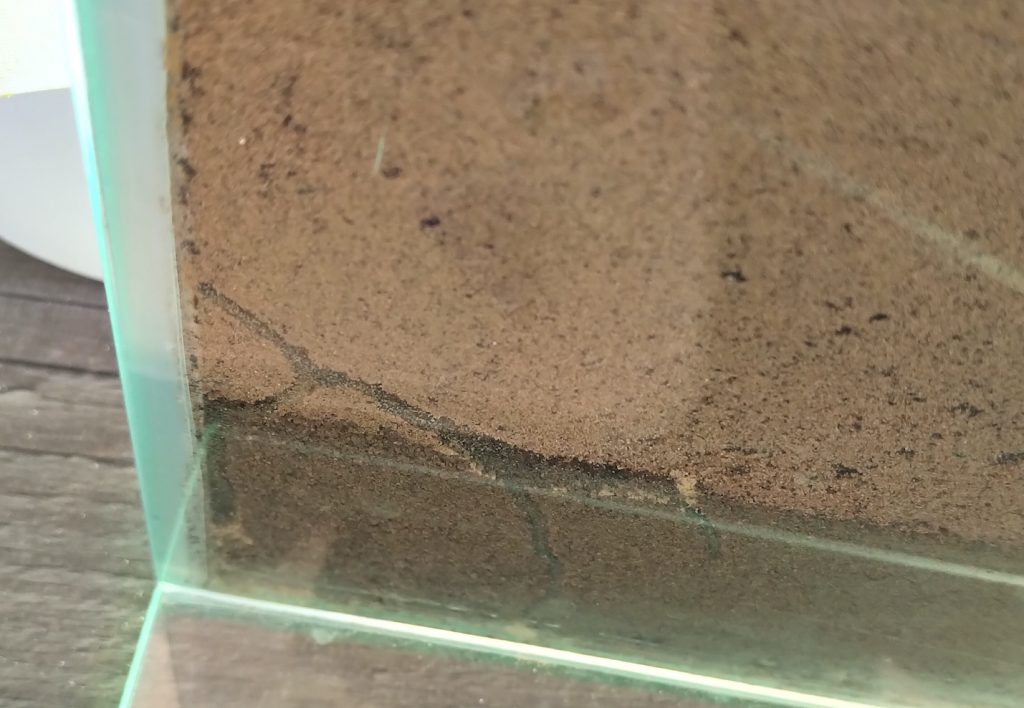Lasius niger
Lasius niger nest building. Today I noticed that my Lasius niger have expanded their nest somewhat. This first came to my attention when I was feeding my captive ant colonies. I noticed that the plastic tubing linking their nesting box with the foraging tank had more soil in it. It had always had a little soil in it when they first moved in, near the nesting box port. But today there is a lot more soil, well sand to be more accurate. I also noticed that amount the dark-coloured sand particles, there were some lighter ones too. This told me that they had dug down to the deeper, lighter-coloured sand.
I lifted the nesting box covering and noticed a new tunnel way down near the bottom of the nesting box, laying on a horizontal plane. When I shone a light into the tunnel I could see several Lasius niger workers scurrying along it.
Seeing this new nest building activity is good news. Why? Because it tells me that the colony population is expanding – the queen is laying eggs. I cannot see the queen, or the main part of the nest. It is hidden behind the metal structure of the side of the nesting box. However, I am sure that as the nest expands, I will see more and more ants. Perhaps they will build a new royal chamber for Her Majesty, in an area that` I can see into.
I have also noticed more of the workers feeding when I place food into heir foraging box. This is another sign of the Lasius niger nest building and population expansion.


Lasius flavus
There is a lot more activity in the newest nesting box with numbers of ants and brood being present. However, the colony seems to be split in an even number between those residing in the old nesting box, and those in the new nesting box.
I cannot see the queen, and both nesting boxes seem to have activity that suggest the queen could be in either one. I did notice that all the brood in now in the new box. There is none in the old box now. The brood numbers are very low, with only larvae being present. The queen could be in the new box, seeing as the brood is there. Yet would she have been moved from the old box to the new one? Difficult to say. The most dangerous time for ant colony move is the relocation of the queen. If she is killed in the move, the colony is ultimately doomed.
It’s interesting to watch the ants laying down pheromone trails when I place new food in their tank. There are two lines; one leading to the old box, the other to the new.
Myrmica rubra
My, the queen has been busy! The number of larvae present is growing, and the ants are constantly looking for food. I am having to feed them every day just to help keep the larvae fed. However, I did notice that some of the newly “born” ants are smaller than their older sisters. This suggests to me that I still am not providing them with enough food. I have plenty of food to give them, with a large cockroach colony, a Morio worm colony, and lots of “ant jelly“.
Easily the most success Myrmica colony I have ever had. May it long continue!